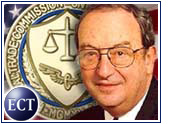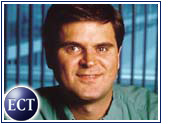Toys “R” Us rocked the e-commerce world earlier this week when it announced that the hand-picked chief executive officer it had chosen to run its online operations wouldn’t be coming on board after all.
In a news release the Paramus, New Jersey big-box retailer said that Bob Moog, “has been unable to extricate himself from his responsibilities as founder and CEO” of University Games Inc. of Burlingame, California. It added that the company would begin a new search for another CEO.
Meanwhile, the news pushed shares of eToys Inc. up 7.3 percent and once again illustrated that many successful brick-and-mortar companies still don’t get it.
What don’t they get?
In a phone interview with the Wall Street Journal, Moog said that while his departure from Toys ‘R’ Us was amicable, the two sides disagreed on a variety of business issues.
“Neither side was really happy with the way things were working out,” Moog said.
One of the obstacles facing Moog was that Toys “R” Us wanted its online store to buy inventory, not where it could get the best prices, but rather through existing channels already established through its brick-and-mortar stores.
In other words, Moog wanted to create a lean, mean e-commerce machine that would compete with companies such as eToys, while the giant retailer insisted on holding on to its bureaucracy and old ideas. Instead of treating its Web site as an independent entity, Toys “R” Us is treating it as merely an extension of its brick-and-mortar self.
Big Mistake
By doing so, Toy’s “R” Us just gave every e-commerce toy seller a head start for the crucial holiday shopping season — virtually eliminating any chances it had to knock off eToys, its chief online rival.
eToys launched its Web site October 1997, offering 1,000 toys from 100 manufacturers, just in time for the holiday shopping season. The company then paid America Online $3 million (US$) for an anchor spot through 1999. In early 1998, eToys bought out its closest competitor — Pasadena, California-based Toys.com. This boosted its customer base by 30 percent. Mid-1998, it braced for heavy competition when toy giant Toys “R” Us opened its online store — but the competition never materialized. Now that Toys “R” Us seems set on running its already weak Web site like a brick-and-mortar toy store, there must be celebration and champagne popping at eToys’ headquarters.
Hiring Moog had been portrayed by some analysts as a move in the right direction for Toys “R” Us. But now that it’s been nixed, the toy chain can go back to doing what it and other retail dinosaurs do best: holding tightly on to their old ideas while the new economy blossoms before their very eyes.





































Where’s eToys today?